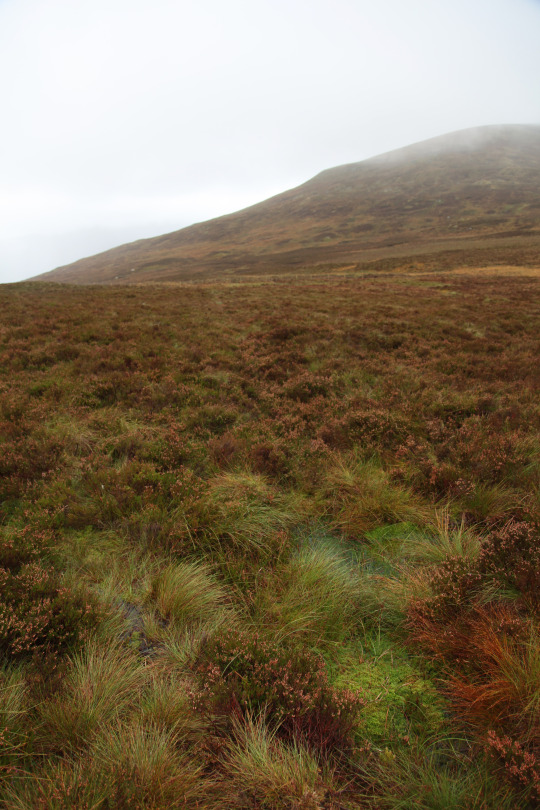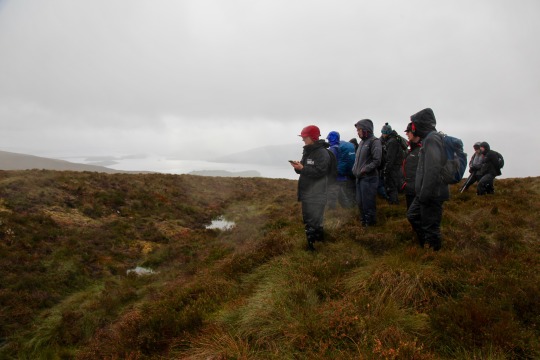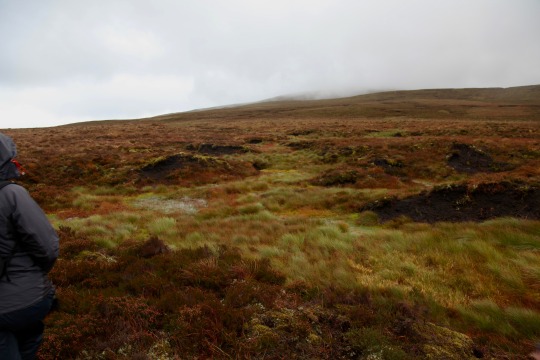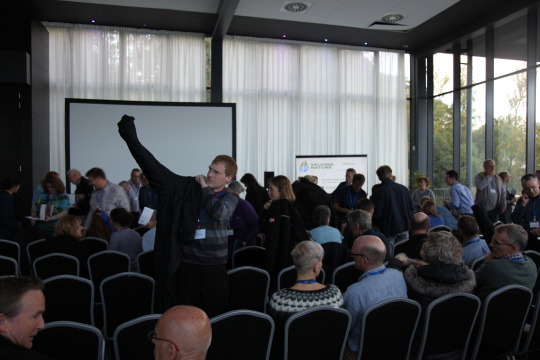Link
2 notes
·
View notes
Link
Free access online. “Recovery rates across studies suggest that substantial recovery of the abundance, structure and function of marine life could be achieved by 2050, if major pressures—including climate change—are mitigated. Rebuilding marine life represents a doable Grand Challenge for humanity, an ethical obligation and a smart economic objective to achieve a sustainable future.”
0 notes
Link
A five year scientific trial into the effects of beaver reintroduction in the UK funded by the Devon Wildlife Trust, suggests that beavers have enhanced ecosystem services linked to flood attenuation, pollution mitigation and habitat support for fish, amphibians and other wildlife. Undesirable impacts to humans were primarily in the form of flooded agricultural land and loss of orchards due to tree-gnawing.
Brazier, the lead scientist behind the study highlighted that those who benefit from beaver reintroduction may not always be the same people as those who bear the costs e.g. reduction of flood risk in communities downstream may come at a cost of water being stored on farmland upstream. A mechanism for redistributing benefits such as a catchment fund might serve to redistribute these benefits.
The Department for Environment, Food and Rural Affairs has announced an extension of the Devon trial until September, when it will decide if the Devon beavers can remain. Natural England has issued 13 beaver licenses since 2017.
Taken from the guardian.
#Natural capital#beaver#devon#ecosystem services#flood attenuation#pollution reduction#new investment theory
0 notes
Link
Supporting populations of great crested newts in England through restoring derelict farm ponds
0 notes
Text
(3/3) Expanding Peatland Restoration

Turning to the type of policy framework which can assist in improving peatland health in Scotland and in doing so support rural economies, Tom Lancaster of the RSPB highlighted that in addition to those proximate factors which have caused degradation to peatlands such as conifer planting, industrial pollution, grazing and gripping, governmental policies have actively contributed to peatland degradation through often subsidizing and thus incentivizing those proximate factors being undertaken. Therefore, current regulation must take a step-change to counteract historical ‘regulatory failure’ and cut through ‘contradictory drivers of land-use change’ while enhancing payments for public goods, providing advice, and improving monitoring, enforcement and evaluation. Jo Pike of the Scottish Wildlife Trust highlighted the increasingly complex nature of public goods through the example of the internet, which though being a public good in its nature, is upheld by private companies, and in doing so questioned the tradition split between public and private actors in producing such goods and services, with this extending to the need for policy makers to collaborate with the private sector in achieving environmental goals. She highlighted that different levels of NC management — be it maintenance, enhancement or restoration — requires multiple levels of coordination and financing methods between public and private actors. Thomas Binns, representing the National Farmers Trust, provided important insights into the perspectives of agriculturalists, who manage the majority of Scotland and the UK’s land cover, and are an important private stakeholder in managing NC assets. He highlighted that farmers are already actively aware of the importance of non-food benefits from their lands and in many cases are already providing these. Though agriculture primarily seeks to produce food, the intensification of which has resulted from farming subsidies following WW2, he argues that the changing focus of agricultural subsidies in the last 20-30 has led to improved environmental outcomes, and farmers would respond positively to subsidies which supported the production of non-provisioning ecosystems services from land.
In realizing the potential benefits of restoration, routes of project financing include agri-environmental schemes, peatland-specific programmes such as Scottish Peatland Action, water company catchment management programmes and private funding such as green bonds. Anja Liski, having recently published a report on private watershed restoration financing, entitled ‘Thriving Within the Resources of One Planet’ embellished on catchment-level financing by analyzing the potential for private sector investment in natural capital in the Spey Catchment in Scotland, which is known for the Whisky produced there. By surveying businesses within the catchment, she found that a key issue limiting private-sector NC investment is that many businesses don’t understand how such investment would benefit them, nor how to invest in NC. As a means of surmounting the latter problem, two models for coordinating investment were proposed. Firstly, a ‘Levy Model’, wherein a levy is made on businesses requiring/requesting them to contribute to NC investments which contribute to agreed priorities. This money could be funneled to an intermediary such as a landscape cooperative or partnership to determine how financial resources were allocated (though there remains ongoing issues with funding the administrative costs of such initiatives). The second model would be more ‘Project-based’, and involve payments being taken from businesses to pay for specific projects, with costs distributed according to who would benefit most. Businesses saw government as having an important role in creating an investment framework but that decision-making regarding resource allocations should ideally be decentralized. Anja concluded by highlighting that clearly there was much work to be done in this space given that privately financed restoration remained at a far smaller scale than that funded by public bodies.

Looking to publicly-led financing of restoration work, In order to finance the restoration of renewable NC which has been degraded in the past, and maintain it where necessary, Helm recommends several routes. Firstly, a polluter-pays principle, wherein those who will damage, and to some extent, have damaged peatlands, pay for the costs of those damages, presents one means. This might be possible through establishing a fund supplied by a taxation on environmentally damaging activities. Secondly, where there are beneficiaries of renewable NC assets, capturing some of those benefits monetarily, and supplying these to the owner/manager of peatland bogs is a further route. This has been further supported by the likes of the Green Alliance in their proposed Natural Infrastructure Schemes. Lastly, the removal of inefficient subsidies such as those associated with agriculture, alongside the reorientation of subsidies so that these primarily pay for public goods is a means through which renewable NC assets can be financially enhanced. Innovative tools for investing in natural capital across public and private actors, includes more free-market approaches such as debt-based financing through Green Bonds e.g. those for Forest Resilience in Flagstaff, Arizona or supporting the development of Natural Infrastructure Schemes (where beneficiaries of peatlands pay suppliers), administered prices such as taxes or statutory payments on activities damaging peatland, taxes on corollary benefits such as associated with recreation and the alterations of subsidies so that a greater quantity of public goods are provided while less public bads are paid for. These can augment tradition forms of financing such as through grants via general taxation to landowners, budgetary allocations to agencies whose jurisdiction covers peatlands and relying on philanthropy. The role of public policy in galvanizing such revenues stream would relate to administering prices and markets, altering property rights e.g. making the public the owners of all natural capital such that any damages must be paid for, or the encouragement of the likes of voluntary levees. These tools together might be able to better help management peatlands for their public benefits rather than those which are primarily private.
0 notes
Text
(2/3) Methods for Peatland Restoration

The second day of the conference allowed participants to tour actual peatland restoration sites in proximity to the Loch Lomond and Trossachs national park, including those carried out by the park itself, by charities such as the Royal Society for the Protection of Birds and also private landowners. In the national park itself, ‘nature, heritage and land are managed and enhanced to provide multiple benefits for all’ and efforts are underway with Scottish Natural Heritage to invest funding from the Scottish Government’s Peatland Action programme in restoring degraded peatlands. In addition to restoring natural capital through the likes of woodland expansion and enhancement, peatland restoration, reducing marine litter and non-native species, the natural park’s management seeks to tackle climate change through natural flood management, connecting habitats and enhancing carbon sequestration, and establishing land partnerships to manage grazing intensities and build ties. One definition of ecological restoration refers to it as an intentional activity of initiating or accelerating the return of a degraded, damaged or transformed ecosystem resulting directly or indirectly from human activities, to a historical trajectory with respect to structure, composition and/or function. The extent of past impacts by humans on the peatlands of the area have encouraged a want to reverse these impacts where possible.

By Medieval times in Scotland, a substantial proportion of the nation’s forests had been cut down for fuel and construction. Following mass deforestation, peat - rich in carbon as it is - was cut, dried and burned for fuel by people. Long-term grazing of cattle and sheep, in addition to the recent proliferation of large herbivore such as deer due to natural predators having been killed, has led to a form of negative artificial selection in vegetative communities, hindered the growth of trees and led to erosion through trampling damage. Most recently, peatland draining, or ‘gripping’ to improve the value of land for agriculture as encouraged by the 1947 Agricultural Act, led to decreased soil moisture, lowered water-table and changed vegetative communities. These effects saw the ecological structures and functions of peatlands, such as invertebrate habitat provision by small surface pools to decline and impact other services such as carbon sequestration, water purification and hydrological attenuation. Park employees, supported partly by funding from the EU Life initiative, have been undertaking restoration-related interventions, including culling red deer, reducing grazing density (but not entirely to ensure livelihoods reliant on grazing were upheld) and blocking up grips which were dug to drain the peatlands to increase local water tables.

In order to block grips, dams are created using locally available materials, primarily peat. The most aerated peat on both sides of a historically constructed gulley is dug through to reach non-oxygenated peat in order to ensure the dams adequately seals, as aerated peat is porous and leaks. Peat and then quarried from the local area, extracted by digging a ditch on a contour (to prevent causing erosion), remove turf, extracting peat and replaced turf. Dams are then constructed along the length of gullies either by hand or using machinery, in order to slow the flow of water through them, while increasing sediment deposit and water-logging. In a relatively short period of several years, the material trapped behind dams act as raised, moist islands within the ditches, raising water levels, while providing habitat for the likes of Sphagnum mosses and other species that colonize created pools. Increased wetting enhances other services such as the sequestration of carbon by peat, support of native vegetation communities and reduced likelihood of fire incidence. Sphagnum inoculation is sometimes opted for, but autogenic revegetation is typically relied on. To maintain the services generated by this kind of restoration, maintenance over time is required to counteract sometimes high rates of dam failure, and success has been noted to have been found by other sites using stone dams, though these remain impractical for limited accessibility, where wood or plastic is sometimes used.
0 notes
Text
Rural Economies and Peatlands (1/3)

Over 100 people attended the 8th IUCN UK Peatland Programmes’ Nationwide Conference on the topic of ‘Peatland Connections: Building Prosperity’ between the 2nd and 4th of October 2018 in the Loch Lomond and Trossachs National Park of Scotland. The overarching aim of the Peatland Programme has been to promote the restoration of peatlands in the UK, while advocating for the multiple benefits they provide via partnerships, strong science, sound policy and effective practice. The conference this year focussed on the public benefits of peatlands, investigating and presenting how peatlands, which constitute almost 20% of land cover in Scotland and of which, approximately 50% are damaged, can support prosperous businesses and communities when in good condition. The conference presented peatlands and the work being done to restore them in the UK through the framing of natural capital — which is increasingly used in the context of discussing environmental management in the UK. Jonathan Hughes of the Peatland Programme drew immediate attention to the fact that investing in peatlands in Scotland at an adequate scale requires large injections of capital now in order to save money in the long-run by turning current and prospective natural capital liabilities into assets. Looking to the Loch Lomond & Trossachs National Park as an example, he highlighted the fact that 10 times more carbon is stored in its peat than forests, with peat conservation and restoration activities therefore providing substantial economic benefits through helping with the prevention of, and adaptation to, climate change. Francesca Osowska, the CEO of Scottish Natural Heritage — which is the statutory environmental management agency in Scotland — went on to introduce the Scottish National Peatland Plan and ‘peatland action’ initiative, which are helping realize the Scottish government’s aim as outlined in its Climate Change Plan of 2018 — for restoring 50,000 hectares of peatland by 2020, and 250,000 by 2030. To this end and since 2012, 15,000 hectares of peatland have been ‘set on their road to restoration’. More can be found on this initiative at www.nature.scot/peatlandaction.
Dieter Helm, professor of energy economics at the University of Oxford contributed to the discussion through fleshing out the concept of Natural Capital (NC). For Helm, NC is defined as what nature provides us for free, a planetary inheritance to which every generation should have a right. Rather than focussing on ecosystem services terminology which is often associated with the NC concept, Helm asks for the NC concept to be understood as relating to assets and opportunities in natural systems. Natural Capital can be subdivided into that which is non-renewable e.g. metals, and that which is renewable, e.g. forests. Renewable NC can acts as an asset in perpetuity, or until climatic and biophysical factors render them otherwise and they thus have the potential to provide many future benefits suffice that their consumption does not exceed rates of renewal. This perspective of nature as quantifiable assets within accounting frameworks grounded in quantified analysis (biophysical and economic) versus more nebulous concepts such as sustainability give a numerical basis for gauging progress in effectively investing in NC assets. Regarding how the economic benefits of peatlands are quantified, Hazel Tenbirth representing the Office for National Statistics highlighted that Gross Domestic Product as a metric for assessing the health of the UK’s economy gives only part of the picture given that it focusses only on flows and not stocks. The ONS have systematically expanded their work to account for the value of the UK’s natural capital stocks, measured in both non-monetary and monetary terms across a 100 year time-horizon. The methodology used for valuing these natural capital assets proceed by splitting the UK into its ecosystems and measuring the extent of that type (12% for peatlands), before categorizing this extent into different grades of condition. The ecosystem services thought to be derived from that ecosystem type e.g. hydrological celerity increases are then outlined and measured, before a monetary value is assigned to those services when accounting for demand-factors. Taken together, these stages underpin how the total economic value of NC in the UK is arrived at.
Andrew Moxley went to explain that peatland restoration provides benefits to society which are mainly directly untraded in markets such as temperature regulation, and cultural values. Looking at the economic value for carbon sequestration services provided by restoring peatlands as one element of their total economic value, these were estimated to range between £90-210/ha/yr (up to £1350/ha), while when accounting for the ‘total’ benefits of restoring peatland, these were thought to be £127-414/ha/yr in Scotland and £152-411/ha/yr for the whole of the UK. Turning to the costs of peatland restoration, these varied according to factors including types of restoration undertaken and location of activities, but could be categorized into: upfront administrative costs for design; upfront capital costs for restoration undertakings such as grip blocking (ranging from £150-7000/ha across projects assessed); recurrent costs such as for repairs; and opportunity costs such as associated with losses in income from the next most valuable use of land. Accounting for both sides through benefit-cost analysis drawing on the analysis of benefits and costs, can help determine where the greatest return on investment with scarce financial resources might be had when investing in ecosystems and is a tool used extensively by the likes of the Adaptation sub-committee of the UK’s Climate Change Committee.
0 notes
Text
Pronghorn Reintroduction, Arizona

Despite species loss being commonplace across much of the world, sustainability prescriptions often stop at the designation and protection of land in order to sustain wildlife populations. In the Madrean Archipelago ecoregion spanning Southern Arizona and Northern Sonora, multiple public, private and non-governmental organizations are engaged in ecological restoration and species reintroduction. This picture is of the North American Pronghorn (Antilocapra americana), a herd re-released into the Sonoita plains of Southern Arizona in 2013 following substantial declines in their numbers due to hunting.
Ecological restoration and species reintroduction fundamentally repositions humans from being degradative actors in ecosystems, to potentially positive supporters of ecosystem health and fellow species. Claudia Comberti found that indigenous communities in Southern Peru played an important role in stewarding ecosystems around them through firstly limiting extraction rates (as sustainability prescribes) and secondly actively managing ecosystems to enhance their function. She coined this phenomena ‘services to ecosystems’ - as an important corollary to the increasingly used but unidirectional concept of ‘ecosystem services’.
Many are calling for new narratives in environmentalism, as in politics and beyond, for the 21st century. Though sustainability as an aim continues to be critical and remains elusive in many cases, it has to date focussed primarily on how we can do less environmental harm. Ecological restoration asks how we can do more environmental good through the enhancement of ecosystem function for us and fellow species. With the esteemed biologist E.O. Wilson calling for the 21st century to be a century of restoration, might it offer a profound and inspiring narrative to help us go beyond sustainability and leave the world in a better state than we found it?
0 notes